The Dudhwa National Park is located in the Terai region of Uttar Pradesh and has proven to be a thoroughly thrilling wildlife sanctuary for both nature and wildlife lovers. With 490 square kilometers under its wing, the park is rich in biodiversity, featuring endangered species such as the Bengal tiger, Indian rhinoceros, and swamp deer, also known as barasingha. Therefore, Dudhwa presents a unique opportunity to explore the glory of the Terai ecosystem and witness wild lives in their actual habitat, covered in beautiful grasslands, heavy forests, and marshes.
Location

Photo: AlinSingh / Wikimedia Commons
The national park is located in the Lakhimpur Kheri district of Uttar Pradesh near the Indo-Nepal border. This forms the larger Dudhwa Tiger Reserve, which comprises the Kishanpur and Katarniaghat Wildlife Sanctuaries. Situated about 238 kilometers from Lucknow, the location of this national park in the Terai region provides some critical habitat requirements to preserve several rare and endangered species.
How To Reach
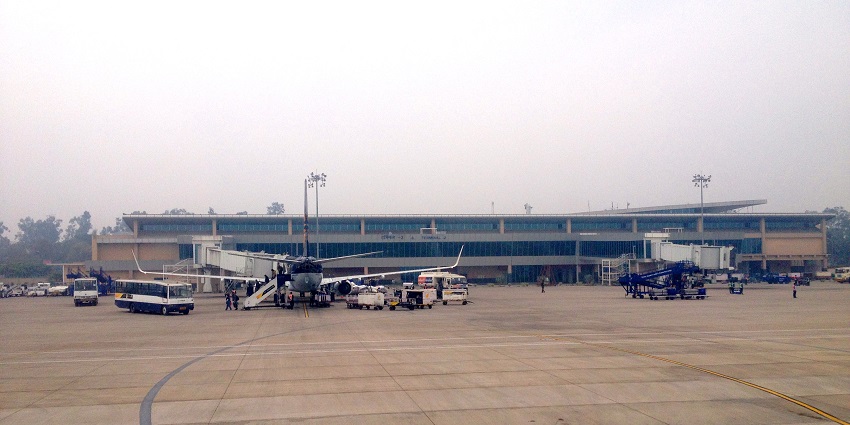
Photo: Trinidade / Wikimedia Commons
You can reach Dudhwa by rail, road, or air, with convenient transport options connecting it to major cities in India.
By Rail: Dudhwa has its own railway station, just 4 kilometers from the park, making it accessible via the North-East Railways. Direct trains from Lucknow, Bareilly, and Gonda serve this station.
By Road: Dudhwa is well connected by road to nearby cities. From Lucknow, the park is about 219 kilometers, and the route passes through Sitapur and Lakhimpur.
By Air: The nearest airport is in Lucknow, located around 238 kilometers away. Lucknow’s airport offers good connectivity with major cities across India.
5 Places To Visit Near Dudhwa National Park
1. Katarniaghat Wildlife Sanctuary

Photo: Attensky / Wikimedia Commons
Located around 80 kilometers from Dudhwa National Park, Katarniaghat Wildlife Sanctuary is part of the Dudhwa Tiger Reserve and is renowned for its dense forests, wetlands, and rich biodiversity. This sanctuary is home to an array of wildlife, including the gharial, dolphins in the Girwa River, and various bird species, making it an excellent spot for birdwatching. Visitors can also spot elephants, tigers, and leopards while exploring its lush terrain.
Entry Fees: Approx. ₹100 per person for Indian citizens
Timings: 6 AM – 5 PM
2. Kishanpur Wildlife Sanctuary
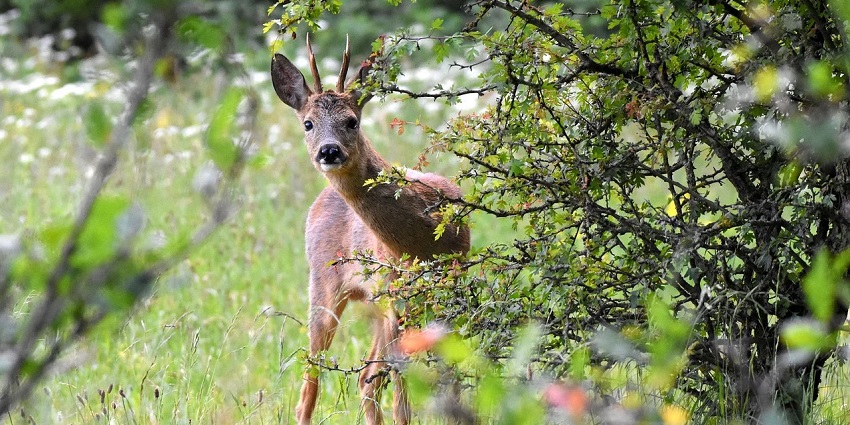
Photo: Hannerup / Pixabay / Image For Representation Only
Kishanpur Wildlife Sanctuary, approximately 30 kilometers from Dudhwa, is known for its large population of swamp deer and its part of the Dudhwa Tiger Reserve. The sanctuary spans over 200 square kilometers and offers a diverse landscape, including grasslands, wetlands, and forested areas. Wildlife enthusiasts can spot tigers, leopards, and various deer species during their visit. Kishanpur is also a haven for birdwatchers, with its wetlands attracting migratory birds, especially during winter months.
Entry Fees: Approx. ₹ 50 per person
Timings: 6 AM – 5 PM
3. Pilibhit Tiger Reserve
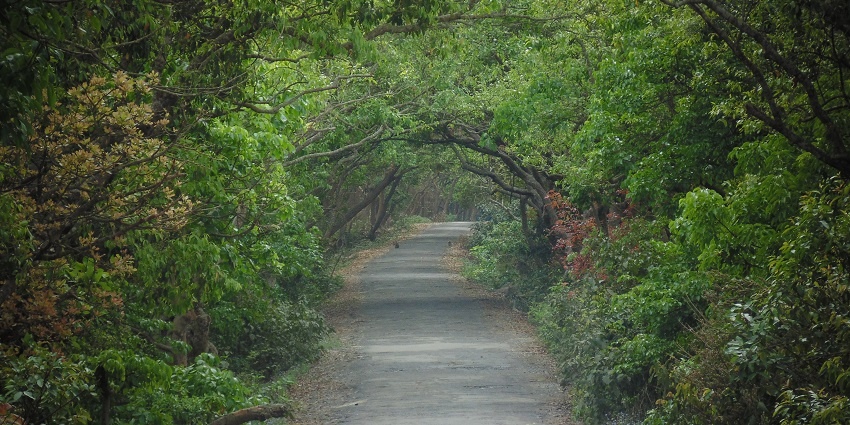
Photo: Rtndeep889 / Wikimedia Commons
Situated about 100 kilometers from Dudhwa, Pilibhit Tiger Reserve is another vital part of the Terai Arc Landscape. Spread over 730 square kilometers, the reserve is known for its rich biodiversity, especially its tiger population. It features sal forests, grasslands, and wetlands, supporting a wide range of animals such as leopards, elephants, and the endangered Bengal florican. Pilibhit offers a perfect blend of scenic beauty and wildlife encounters, making it a must-visit for anyone exploring the wildlife attractions near Dudhwa.
Entry Fees: ₹100 per person
Timings: 6 AM – 5 PM
4. Tharu Tribal Village
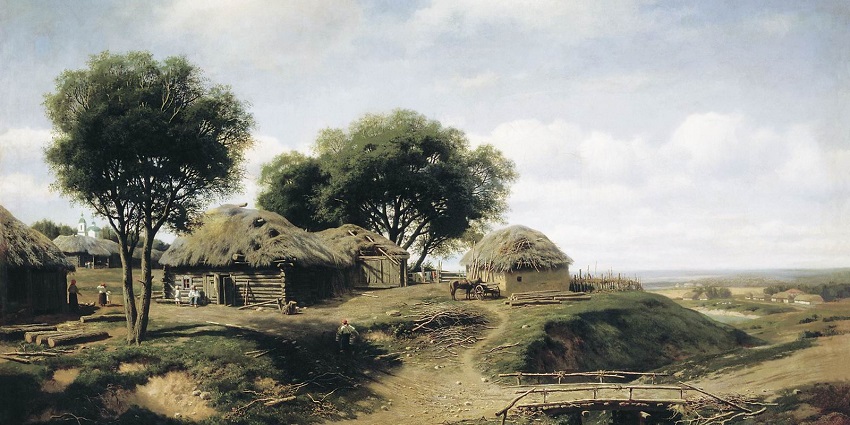
Photo: Mikhail Clodt / Wikimedia Commons / Image For Representation Only
A visit to the Tharu Tribal Village offers an immersive cultural experience near Dudhwa National Park. The Tharu people are indigenous to the Terai region and have lived in harmony with nature for centuries. Visitors can explore their mud houses, learn about their traditional practices, and even sample local Tharu cuisine. The village also provides insights into how the community has adapted to modern challenges while maintaining their cultural heritage.
Entry Fees: Free
Timings: Open throughout the day
5. Sharda River

Photo: Umais82 / Wikimedia Commons
The Sharda River, also known as the Mahakali in Nepal, flows along the border of India and Nepal near Dudhwa National Park. The river’s scenic beauty, combined with its calm and pristine environment, offers a peaceful retreat for nature lovers. The riverbanks are a great place for picnicking, and visitors may also enjoy boat rides. Additionally, the river is a vital water source for the park’s wildlife, and it is common to see animals drinking along its shores, especially during the summer months.
Entry Fees: Free
Timings: Open throughout the day
Where To Stay

Photo: JanClaus / Pixabay / Image For Representation Only
Dudhwa National Park offers a variety of accommodation options to suit different preferences. The Forest Rest Houses, managed by the park authorities, provide a rustic experience for visitors who want to stay close to nature. For those seeking more comfort, eco-lodges such as Jaagir Lodge offer a luxurious yet environmentally friendly stay with modern amenities. There are also mid-range resorts and hotels located in nearby towns like Palia and Lakhimpur. Most accommodations provide basic amenities, and some even offer guided safaris, making it easier for tourists to enjoy the wildlife experience without leaving their lodging.
Where To Eat

Photo: Dina Said / Wikimedia Commons / Image For Representation Only
Dining options around Dudhwa National Park are primarily available within the lodges and hotels where visitors stay. The Forest Rest Houses provide simple, home-cooked meals arranged by park authorities. For a more varied experience, the eco-resorts and lodges often offer multi-cuisine dining options, including Indian and continental dishes. Visitors can also explore local cuisine by visiting nearby villages like Tharu, where they can enjoy traditional flavors unique to the region. However, it is advisable to arrange meals in advance as there are limited restaurants or standalone dining establishments near the park.
Best Time To Visit

Photo: Naman Narain / Wikimedia Commons
The tourist season of Dudhwa National Park is from November to May when the park is open for tourists. Despite that, winters seem to be a pretty great time, and temperatures are around 10°C to 22°C, making it an ideal time for safaris and spotting wildlife. Summer months can get hot, but wildlife tends to gather around water sources, making it easier to spot animals. The park remains closed during the monsoon season due to heavy rains and flooding.
Other Factors To Consider
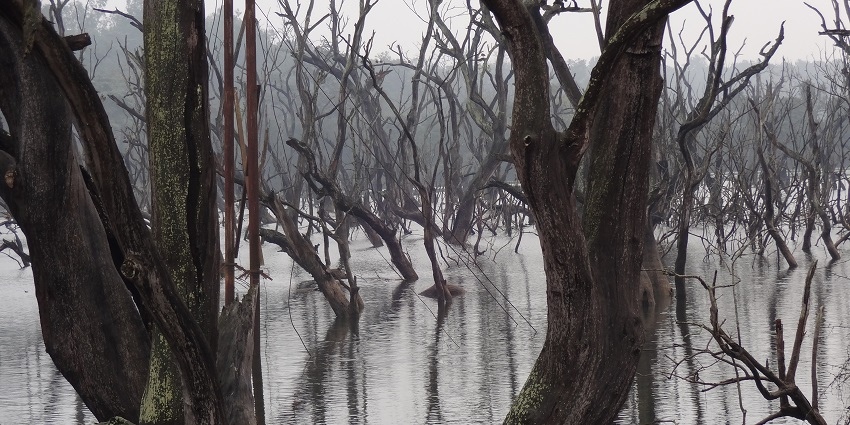
Photo: Sanjal / Wikimedia Commons
When planning a visit to Dudhwa National Park, there are several important factors to consider. The park is open from November to June, with peak wildlife viewing season between November and May. Entry fees vary for Indian and foreign tourists, and additional charges apply for safaris and hiring guides. Safaris typically run twice a day, in the morning and late afternoon. It is recommended to book safaris in advance, as demand can be high during peak season. Also, visitors should adhere to park rules, including avoiding plastic waste and respecting wildlife during the safari.
Tips For Travelers
- Book safaris in advance, especially during peak season, to secure the best wildlife viewing spots.
- Dress according to the season, warm clothing for winter, light and breathable attire for summer.
- Carry essentials like binoculars, a camera, water, sunscreen, and insect repellent for a comfortable experience.
- Maintain silence, avoid feeding animals, and follow guide instructions to ensure safety for both wildlife and visitors.
- Stay hydrated, protect yourself from the sun, and use insect repellent, especially near water bodies.
Dudhwa National Park is a haven for wildlife enthusiasts, offering an unforgettable experience in the heart of the Terai region. With its diverse flora and fauna, the park is an excellent destination for spotting tigers, rhinoceroses, and countless bird species. Plan your trip with TripXL during the right season, prepare for safaris, and immerse yourself in the beauty of this remarkable natural wonder.
Cover Photo: Koshy Koshy / Wikimedia Commons


 WhatsApp
WhatsApp
 Twitter
Twitter









